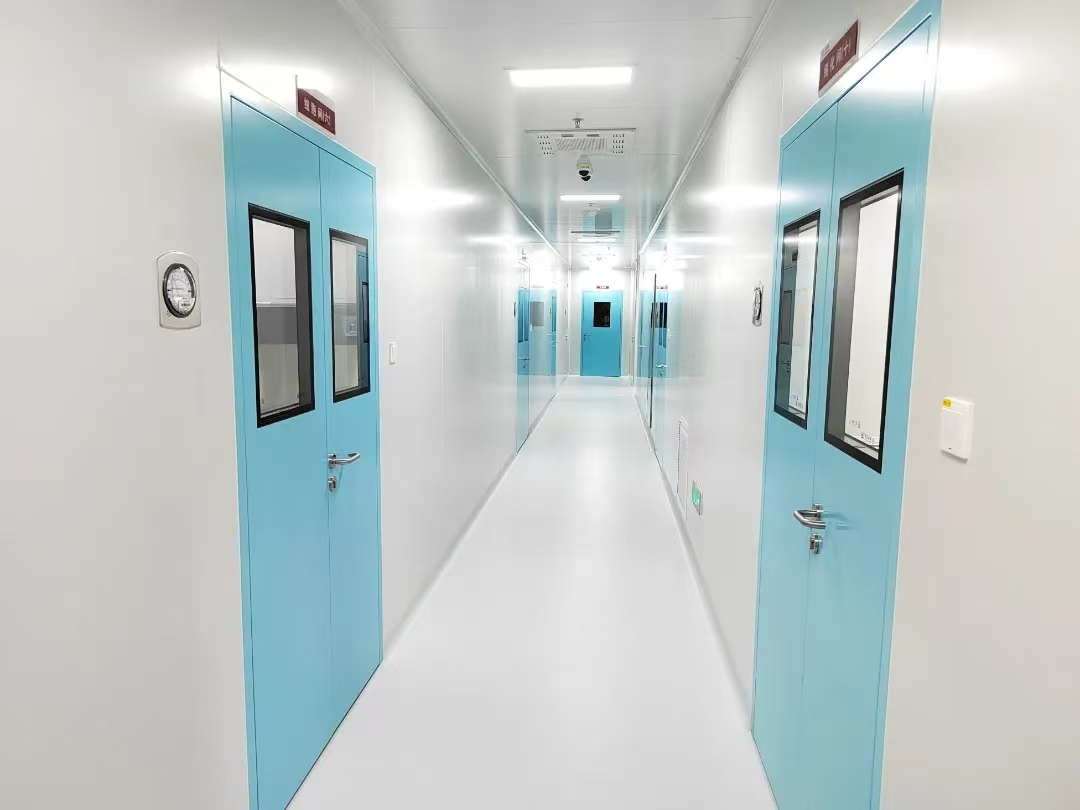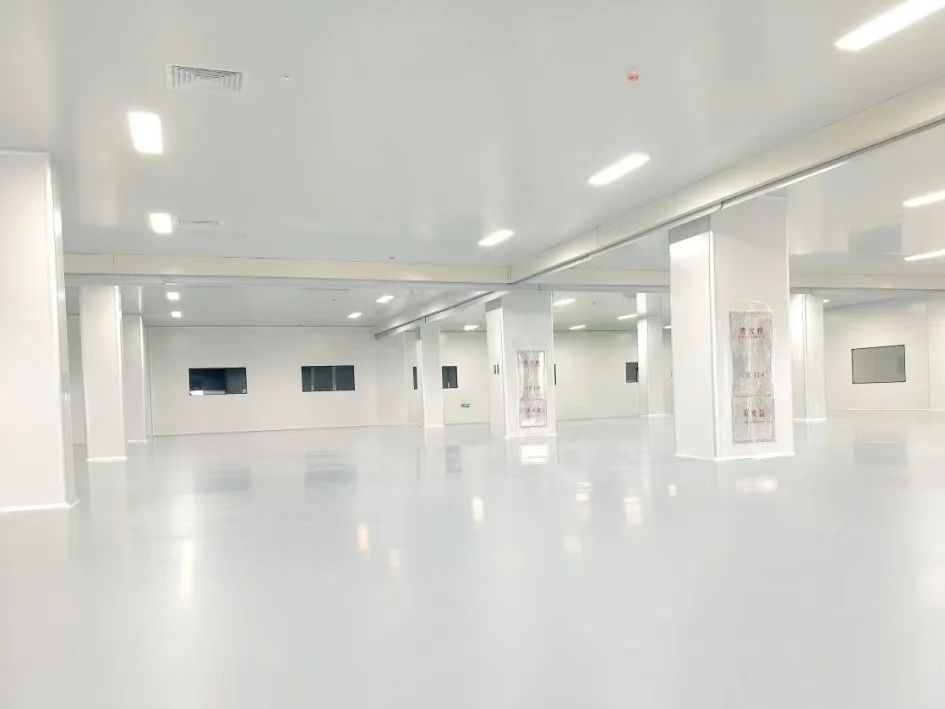

With the continuous development and application of science and technology, the demand for industrial clean room in all walks of life is also increasing. In order to maintain product quality, ensure production safety, and improve product competitiveness, industrial enterprises need to build clean rooms. The editor will introduce the standard requirements of clean rooms in detail from the aspects of level, design, equipment requirements, layout, construction, acceptance, precautions, etc.
1. Clean room site selection standards
The site selection of clean room should consider many factors, mainly the following aspects:
①. Environmental factors: The workshop should be away from pollution sources such as smoke, noise, electromagnetic radiation, etc. and obtain good natural ventilation conditions.
②. Human factors: The workshop should be away from traffic roads, city centers, restaurants, toilets and other high-traffic and high-noise areas.
③. Meteorological factors: Consider the surrounding terrain, landforms, climate and other natural factors, and cannot be in dust and sandstorm areas.
④. Water supply, power supply, gas supply conditions: Good basic conditions such as water supply, gas, power supply, and telecommunications are required.
⑤. Safety factors: The workshop must be in a relatively safe area to avoid the influence of pollution sources and dangerous sources.
⑥. Building area and height: The scale and height of the workshop should be moderate to improve ventilation effect and reduce the cost of advanced equipment.
2. Clean room design requirements
①. Building structure requirements: The building structure of the clean room should have the characteristics of dustproof, leakproof and anti-penetration to ensure that external pollutants cannot enter the workshop.
②. Ground requirements: The ground should be flat, dust-free and easy to clean, and the material should be wear-resistant and anti-static.
③. Wall and ceiling requirements: The walls and ceilings should be flat, dust-free and easy to clean, and the materials should be wear-resistant and anti-static.
④. Door and window requirements: The doors and windows of the clean room should be well sealed to prevent outside air and pollutants from entering the workshop.
⑤. Air conditioning system requirements: According to the level of the clean room, an appropriate air conditioning system should be selected to ensure the supply and circulation of clean air.
⑥. Lighting system requirements: The lighting system should meet the lighting needs of the clean room while avoiding excessive heat and static electricity.
⑦. Exhaust system requirements: The exhaust system should be able to effectively remove pollutants and exhaust gas in the workshop to ensure the circulation and cleanliness of the air in the workshop.
3. Requirements for clean room staff
①. Training: All clean room staff should receive relevant clean room operation and cleaning training, and understand the standard requirements and operating procedures of clean room.
②. Wear: Staff should wear personal protective equipment such as work clothes, gloves, masks, etc. that meet the standards of clean rooms to avoid personnel contamination in the workshop.
③. Operating specifications: Staff should work in accordance with the operating procedures of clean workshops to avoid excessive dust and pollutants.
4. Equipment requirements for clean rooms
①. Equipment selection: Select equipment that meets the standards of clean rooms to ensure that the equipment itself does not generate too much dust and pollutants.
②. Equipment maintenance: Regularly maintain the equipment to ensure the normal operation and cleanliness requirements of the equipment.
③. Equipment layout: Reasonably layout the equipment to ensure that the intervals and channels between the equipment meet the standard requirements of the clean room.
5. Principles of clean room layout
①. The production workshop is the main component of the clean room and should be managed in a unified manner, and clean air should be output to the channels with low surrounding air pressure.
②. The inspection area and the operation area should be separated and should not be operated in the same area.
③. The cleanliness levels of the inspection, operation and packaging areas should be different and decrease layer by layer.
④. The clean room must have a certain disinfection interval to prevent cross contamination, and the disinfection room must use air filters of different cleanliness levels.
⑤. Smoking, chewing gum, etc. are prohibited in clean room to keep the workshop clean.
6. Cleaning requirements for clean rooms
①. Regular cleaning: The clean room should be cleaned regularly to remove dust and pollutants in the workshop.
②. Cleaning procedures: Develop cleaning procedures to clarify the cleaning methods, frequency and responsible persons.
③. Cleaning records: Record the cleaning process and results to ensure the effectiveness and traceability of cleaning.
7. Monitoring requirements for clean rooms
①. Air quality monitoring: Regularly monitor the air quality in the clean room to ensure that the cleanliness requirements are met.
②. Surface cleanliness monitoring: Regularly monitor the cleanliness of the surfaces in the clean room to ensure that the surface cleanliness requirements are met.
③. Monitoring records: Record the monitoring results to ensure the effectiveness and traceability of monitoring.
8. Acceptance requirements for clean rooms
①. Acceptance standards: According to the level of clean rooms, formulate corresponding acceptance standards.
②. Acceptance procedures: Clarify the acceptance procedures and responsible persons to ensure the accuracy and traceability of acceptance.
③. Acceptance records: Record the acceptance process and results to ensure the effectiveness and traceability of acceptance.
9. Change management requirements for clean rooms
①. Change application: For any change in clean room, a change application should be submitted and it can only be implemented after approval.
②. Change records: Record the process and results of the change to ensure the effectiveness and traceability of the change.
10. Precautions
①. During the operation of the clean room, pay attention to the handling of emergency situations such as power outages, air leaks, and water leaks at any time to ensure the normal operation of the production environment.
②. Workshop operators should receive professional training, operating specifications and operating manuals, strictly implement operating procedures and safety operating measures, and improve operating skills and sense of responsibility.
③. Regularly inspect and maintain the clean workshop, record management data, and regularly check environmental indicators such as cleanliness, temperature, humidity, and pressure.
Post time: Apr-16-2025

